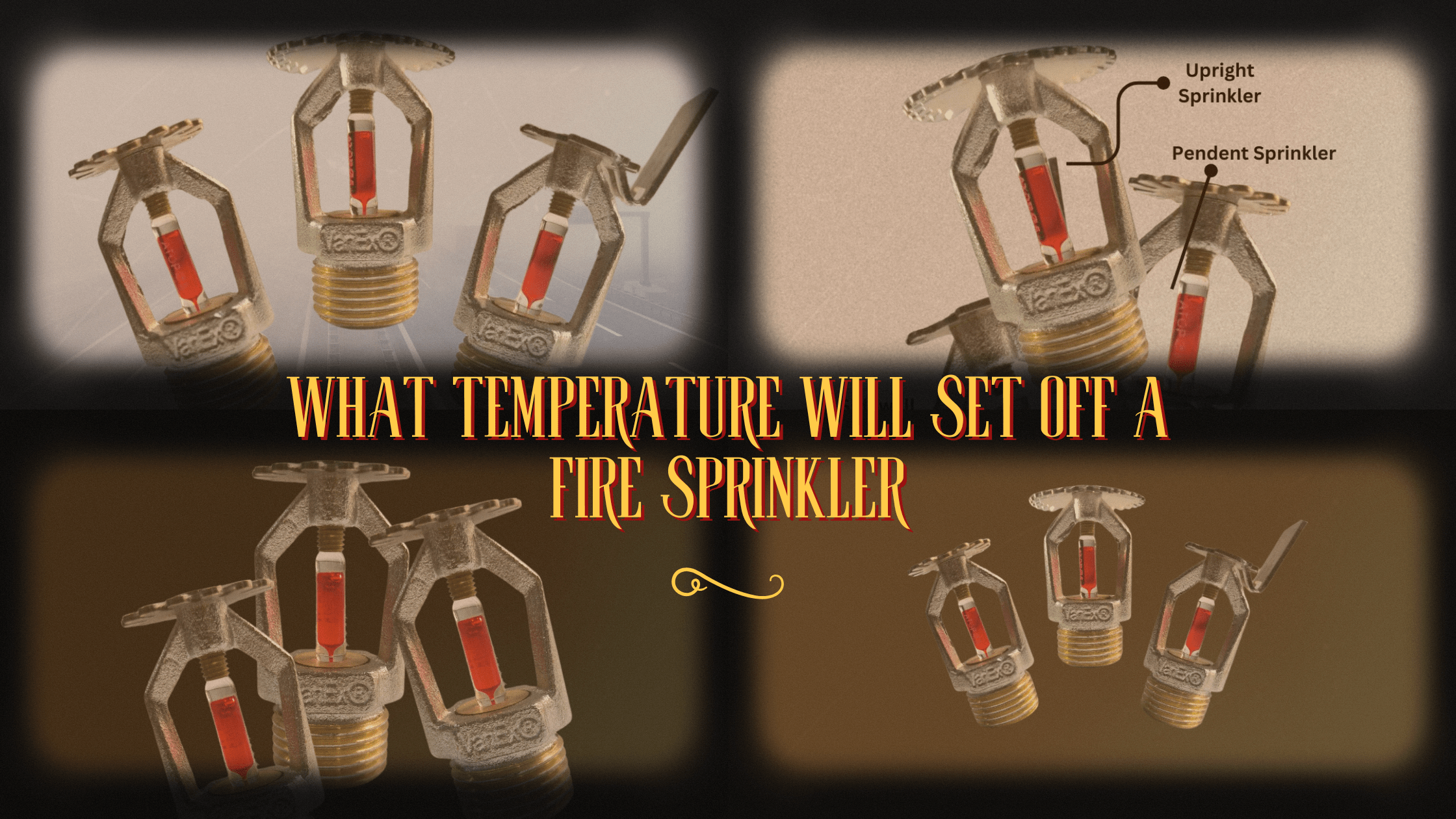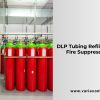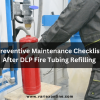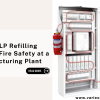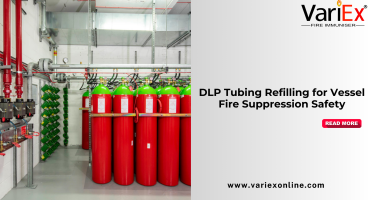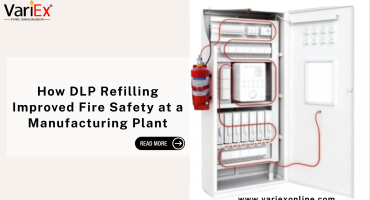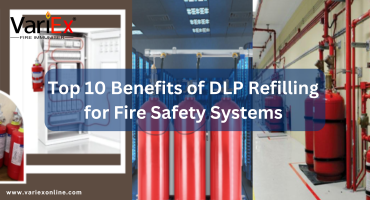![]()
Fire Immuniser
+91-7829629111
Email: info@variex.in
Varistor Technologies Pvt. Ltd.
Block-1, First Floor, Ardente Office One, Hoodi Circle, ITPL Main Road, Bengaluru, Karnataka 560048, IN
What Temperature Will Set Off A Fire Sprinkler
What Temperature Will Set Off A Fire Sprinkler
Fire sprinkler systems are vital components of fire protection in residential and commercial buildings. Their primary function is to detect and suppress fires automatically, minimizing damage and enhancing safety. A common question regarding these systems is: What temperature will set off a fire sprinkler? This article explores the activation temperatures of fire sprinklers, the factors influencing these temperatures, and the broader implications for fire safety.
Overview of Fire Sprinkler Systems
Components of Fire Sprinkler Systems
Fire sprinkler systems consist of several key components:
- Sprinkler Heads: The most visible part of the system, sprinkler heads contain a heat-sensitive element that activates the sprinkler.
- Piping: These pipes carry water from the main supply to the sprinkler heads.
- Control Valves: These valves regulate the flow of water within the system.
- Water Supply: A reliable source of water is essential for the system to function effectively.
Types of Fire Sprinkler Systems
There are several types of fire sprinkler systems, each designed for specific applications:
- Wet Pipe Systems: The most common type, where water is stored in the pipes and released when a sprinkler head is activated.
- Dry Pipe Systems: Used in areas susceptible to freezing, these systems contain pressurized air to keep the water valve closed until needed.
- Pre-Action Systems: These systems require a two-step activation process, often used in high-value or sensitive environments.
- Deluge Systems: Designed for high-hazard areas, all sprinkler heads activate simultaneously when the system is triggered.
Activation Temperatures of Fire Sprinklers
Typical Activation Temperatures
The activation temperature of a fire sprinkler is determined by the specific temperature rating of the sprinkler head’s heat-sensitive element. Common activation temperatures include:
- 135°F to 170°F (57°C to 77°C): This range is typical for standard residential and commercial sprinklers.
- 175°F to 225°F (79°C to 107°C): Higher temperature ratings are often used in areas with high ambient temperatures, such as kitchens or warehouses.
How Temperature Ratings are Established
Sprinkler heads are rated based on the temperature at which their heat-sensitive elements will fail, allowing water to flow. These ratings are standardized and established through testing. The two primary types of heat-sensitive elements are:
- Glass Bulbs: Contain a liquid that expands and shatters the bulb when heated. Commonly used in standard sprinkler heads.
- Metal Links: Two metal links that separate under heat stress. These are often found in high-temperature or high-hazard applications.
Understanding the Color-Coded System
Fire sprinkler heads use a color-coded system to indicate their activation temperatures:
- Red: 135°F (57°C)
- Orange: 155°F (68°C)
- Yellow: 175°F (79°C)
- Green: 200°F (93°C)
- Blue: 225°F (107°C)
- Black: 250°F (121°C)
These color codes help ensure that the appropriate sprinkler heads are selected for specific environments.
Factors Influencing Activation Temperatures
1. Ambient Temperature
The surrounding temperature can significantly affect the activation of fire sprinklers. In areas with high ambient temperatures, such as kitchens or warehouses with large machinery, higher-temperature sprinkler heads are often used. This prevents accidental activation due to heat sources unrelated to fire.
2. Ceiling Height
Higher ceilings can lead to a delay in the heat reaching the sprinkler head, potentially requiring higher activation temperatures. Fire suppression designs often take ceiling height into account, affecting the type of sprinkler head installed.
3. Sprinkler Spacing and Coverage Area
The layout and spacing of sprinkler heads influence how quickly they can respond to a fire. When sprinklers are spaced too far apart, it can lead to delayed activation, making it necessary to use heads with lower activation temperatures.
4. Type of Hazard
Different types of hazards require different sprinkler head ratings. For example, areas with flammable liquids or chemicals may necessitate sprinklers with lower activation temperatures to ensure quick response.
5. Building Design and Materials
The materials used in a building's construction can affect how heat is transferred and retained. For example, buildings with extensive glass facades may heat up faster, requiring careful consideration of sprinkler activation temperatures.
Importance of Understanding Activation Temperatures
1. Safety Considerations
Understanding the activation temperatures of fire sprinklers is critical for safety. Improperly rated sprinklers may not activate in time, leading to increased risk of fire damage and potential loss of life.
2. Insurance and Liability
Insurance companies often require compliance with specific fire safety codes, including appropriate sprinkler systems. Ensuring the correct activation temperatures can lead to lower premiums and reduced liability in case of fire incidents.
3. Compliance with Regulations
Many local and national fire safety codes dictate specific requirements for sprinkler systems, including activation temperatures. Familiarity with these codes is essential for compliance.
Installation and Maintenance Considerations
1. Proper Installation
The correct installation of fire sprinkler systems is vital to ensure they operate effectively. This includes:
- Correct Placement: Sprinklers should be installed according to manufacturer specifications and NFPA guidelines to ensure proper coverage.
- Temperature Ratings: Selecting the appropriate temperature-rated heads for the environment is crucial for effective operation.
2. Regular Maintenance
Routine maintenance and inspection of fire sprinkler systems are essential to ensure their functionality. Key practices include:
- Testing: Regular testing of sprinkler heads to ensure they are functioning correctly.
- Inspection: Visual inspections to check for obstructions, leaks, and other issues that may affect performance.
The Role of Fire Safety Professionals
1. Fire Protection Engineers
Fire protection engineers play a critical role in designing and implementing effective fire sprinkler systems. They assess the unique needs of each building, considering factors such as occupancy, materials, and hazards to determine the appropriate sprinkler type and activation temperature.
2. Fire Marshals and Inspectors
Fire marshals and inspectors ensure compliance with local and national fire codes. They assess the installation and maintenance of sprinkler systems, ensuring that they meet safety standards and function effectively.
Case Studies and Real-World Examples
1. Case Study: Kitchen Fire in a Restaurant
In a restaurant setting, high ambient temperatures are common due to cooking equipment. One restaurant had installed sprinklers with a 155°F activation temperature. During a fire incident, the fire spread rapidly due to flammable materials. The sprinklers activated quickly, limiting the damage and allowing for a swift evacuation.
2. Case Study: Warehouse with High Ceilings
In a large warehouse with high ceilings, sprinklers with a higher activation temperature of 200°F were installed to prevent false activations. During a fire caused by electrical equipment, the sprinklers functioned effectively, suppressing the fire before it could spread to other areas, showcasing the importance of selecting the right temperature rating.
Conclusion
Understanding the activation temperatures of fire sprinklers is essential for effective fire protection. The choice of temperature rating impacts not only the system's reliability but also the safety of occupants and property. By considering factors such as ambient temperature, ceiling height, and the nature of potential hazards, building designers and safety professionals can ensure that fire sprinkler systems function as intended.
Regular maintenance and adherence to local codes and standards are crucial in maintaining system effectiveness. Through ongoing education and collaboration with fire safety professionals, building owners can enhance their fire protection strategies, safeguarding lives and property from the devastating effects of fire.
Frequently Asked Questions
Fire sprinklers typically activate at temperatures ranging from 135°F to 170°F (57°C to 77°C) for standard systems. Higher temperature ratings, such as 175°F to 225°F (79°C to 107°C), are used in environments with elevated ambient temperatures.
Activation temperatures are determined by the type of heat-sensitive element in the sprinkler head, such as glass bulbs or metal links. Each type is tested to establish the temperature at which it will fail, allowing water to flow.
The color-coded system indicates the activation temperature of sprinkler heads. For example, red heads activate at 135°F, while black heads activate at 250°F. This helps ensure the appropriate sprinkler heads are chosen for specific environments.
Yes, if the ambient temperature exceeds the activation temperature of the sprinkler heads, they can activate unintentionally. This is why it's important to choose the right temperature rating for specific areas, especially those with heat sources.
Fire sprinkler systems should be tested and inspected regularly, typically on an annual basis. Routine maintenance is essential to ensure they operate correctly and can effectively respond in the event of a fire.
Final Say
At VariEx.in and VariexOnline.com, we specialize in supplying and installing top-quality fire fighting systems and equipment. From fire extinguishers to advanced suppression systems, we offer comprehensive solutions tailored to your needs. Our experienced team ensures precise installation and maintenance for optimal safety.
Trust VariEx for reliable fire protection. Contact us online or call 7829629111 to learn more.
We specialize in manufacturing, supplying, and distributing a comprehensive range of fire fighting equipment, including state-of-the-art fire extinguishers. Read our most searched blogs and find interesting information on topics such as how to use a fire extinguisher, how to calculate fire fighting water tank capacity, fire extinguisher refilling, obtaining a Fire NOC, understanding fire fighting systems, types of fire protection systems, the fire hydrant system, and the fire sprinkler system. These resources provide essential knowledge for ensuring safety and compliance with fire safety regulations. Additionally, you can explore guides on the maintenance of fire protection equipment, the latest advancements in fire safety technology, and best practices for fire risk assessment and management.
Our expertise extends to fire alarm systems, fire hydrant systems, and fire suppression systems, including fire sprinklers. Each product meets rigorous international standards for reliability and performance, ensuring effective fire safety products tailored to diverse applications and industries. Additionally, we are providing Fire Extinguisher Refilling and AMC services to ensure ongoing maintenance and operational readiness of fire safety equipment.
"WHAT YOU CAN READ NEXT"
 Read more +24 November 2023 in Fire Extinguisher
Read more +24 November 2023 in Fire ExtinguisherWhat types of fire extinguishers are available for different fire classes?
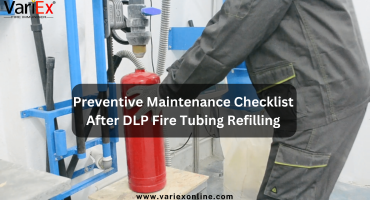 Read more +11 July 2025 in Fire Suppression
Read more +11 July 2025 in Fire Suppression

